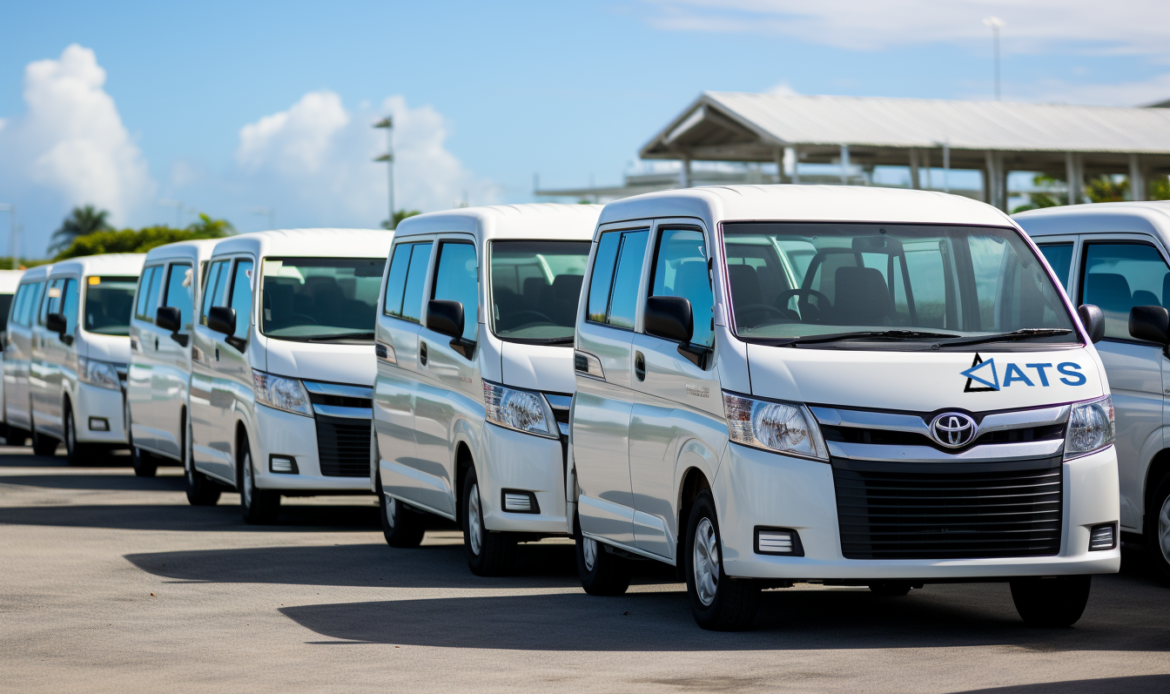
Last-mile delivery has become a critical aspect of logistics, directly impacting customer satisfaction and brand reputation. For companies like ATS Logistics, optimizing the last mile strategy is essential for maintaining timely, efficient, and cost-effective delivery solutions. This final leg of the delivery journey, which brings goods from a distribution center to the customer’s doorstep, is often the most costly and challenging part of the supply chain. Here, we’ll explore effective ways to improve last-mile strategy, reduce expenses, and deliver an exceptional customer experience.
Understanding the Challenges of Last Mile Delivery
Before diving into solutions, it’s essential to understand the unique challenges that make last-mile delivery difficult. Unlike the line-haul transportation phase, which often involves predictable routes and bulk shipments, last-mile delivery requires flexibility, frequent stops, and precise coordination with customers.
High Operational Costs: Last-mile delivery accounts for up to 53% of the total shipping cost due to factors like fuel, labor, and vehicle wear and tear.
Urban Traffic and Congestion: Delivering in urban areas can lead to delays and inefficiencies due to dense traffic and limited parking options.
Customer Expectations for Fast Delivery: Today’s consumers expect faster, real-time delivery options, adding pressure to logistics companies.
Environmental Impact: With the increase in last-mile deliveries, the carbon footprint from transportation has risen, prompting the need for sustainable solutions.
Addressing these challenges effectively can streamline last-mile delivery and improve customer satisfaction, leading to a more resilient and practical last-mile strategy.
Optimize Route Planning
Efficient route planning is a game-changer for last-mile delivery. ATS Logistics uses advanced route optimization software to ensure drivers take the most efficient routes, saving time, reducing fuel costs, and enhancing overall service.
Use Real-Time Data: GPS and telematics systems provide real-time information on traffic patterns, road conditions, and weather. By leveraging this data, drivers can avoid delays and find the quickest paths to their destinations.
Prioritize Route Flexibility: While predefined routes can be efficient, having backup routes ready for unexpected traffic or delays can prevent bottlenecks.
Cluster Deliveries: Grouping deliveries in specific geographic areas minimizes travel time between stops, allowing drivers to complete more deliveries in less time.
Embrace Technology and Automation
Integrating technology into your last-mile strategy can bring a new level of efficiency and reliability. ATS Logistics utilizes various technologies that make last-mile delivery smarter, faster, and more predictable.
Dynamic Dispatching: Automated dispatch software enables real-time allocation of jobs based on the location and availability of drivers, helping reduce downtime and enhancing productivity.
Delivery Tracking and Notifications: Allowing customers to track their deliveries with real-time updates not only improves transparency but also reduces customer inquiries and enhances satisfaction.
Automated Proof of Delivery (POD): Using digital signatures, GPS timestamps, and photographic evidence as proof of delivery can streamline the verification process, especially for high-volume deliveries.
Implement Smart Warehousing Solutions
Efficient last-mile delivery starts with smart warehousing solutions. ATS Logistics emphasizes streamlined warehouse practices that optimize the sorting and loading process to ensure timely delivery.
Cross-Docking: By sorting packages based on delivery location upon arrival at the warehouse, cross-docking allows faster loading, reducing handling time and speeding up last-mile delivery.
Micro-Warehousing: Establishing small warehouses or fulfillment centers close to urban areas can cut down the distance to the customer, enabling faster delivery times.
Efficient Picking and Packing Systems: Using barcode scanners, AI sorting, and automated conveyor systems can streamline order fulfillment, reduce error rates, and ensure packages are ready for dispatch without delay.
Focus on Customer Experience
Customer experience is a core element of a successful last-mile strategy. ATS Logistics ensures that customers receive timely updates and flexible delivery options, which enhance their overall experience.
Provide Real-Time Tracking: Allowing customers to track their packages in real-time builds trust and transparency, giving them a clear view of their delivery status.
Offer Flexible Delivery Options: Giving customers the option to choose specific delivery windows or adjust their delivery preferences accommodates their needs and reduces missed deliveries.
Collect Customer Feedback: Following each delivery, asking customers for feedback can provide valuable insights to improve the service. It also builds goodwill by showing that the company cares about customer satisfaction.
Leverage Electric Vehicles and Sustainable Practices
In response to increasing environmental concerns, ATS Logistics is exploring sustainable options for last-mile delivery. By adopting green practices, companies can reduce their environmental impact and appeal to eco-conscious customers.
Electric Vehicles (EVs): Utilizing electric or hybrid vehicles for last-mile deliveries in urban areas can reduce emissions and operating costs. With advances in EV technology, battery range is expanding, making EVs more viable for longer delivery routes.
Bicycle and Pedestrian Delivery: For shorter distances, especially in congested city centers, bicycle or pedestrian couriers can offer a low-cost, eco-friendly solution that reduces carbon emissions.
Optimize Packaging and Waste Reduction: Using recyclable packaging materials and minimizing packaging size cuts down on waste and also allows more efficient use of space in delivery vehicles.
Enhance Driver Training and Satisfaction
Drivers play a crucial role in last-mile delivery, often serving as the face of the company. ATS Logistics emphasizes driver satisfaction, training, and support to create a motivated team that upholds high standards in customer service.
Provide Comprehensive Training: Training drivers on route optimization, customer interaction, and time management can enhance efficiency and improve customer experience.
Incentivize Performance: Rewarding drivers for on-time deliveries, fuel-efficient driving, or exceptional customer feedback helps maintain high morale and dedication.
Use Driver Feedback for Improvement: Drivers experience last-mile delivery challenges firsthand. By gathering their insights, companies can continually refine their processes and address issues effectively.
Implement Predictive Analytics
Predictive analytics uses historical data and machine learning to forecast trends, enabling companies to anticipate demand surges, delivery times, and other factors that influence last-mile delivery.
Forecast Demand: Predictive analytics helps anticipate peak periods, allowing companies to scale up resources accordingly, avoiding delays and improving customer satisfaction.
Proactive Maintenance for Fleet Vehicles: Predictive analytics can also aid in vehicle maintenance. By forecasting vehicle repairs, companies can prevent breakdowns and ensure that their fleet is always ready for dispatch.
Customer Behavior Insights: Understanding customer purchasing patterns and preferred delivery times allows companies to personalize delivery options, enhancing satisfaction and loyalty.
Use Data to Drive Continuous Improvement
Data-driven decision-making is key to refining and improving last-mile strategies. ATS Logistics leverages data analytics to monitor delivery performance, identify areas of improvement, and ensure optimal operations.
Measure Key Performance Indicators (KPIs): Tracking KPIs such as on-time delivery rate, fuel consumption, and customer satisfaction helps in identifying and addressing weak points in the delivery process.
Analyze Failed Deliveries: Reviewing failed deliveries and understanding the reasons behind them can lead to practical solutions that reduce delivery errors, missed deliveries, and additional costs.
Adjust Strategies Based on Trends: Market demands and customer expectations evolve continuously. Using data to monitor these shifts enables companies to stay agile and adjust strategies proactively.
Conclusion
Optimizing the last-mile strategy is a vital part of achieving reliable, cost-effective, and customer-centric logistics solutions. For ATS Logistics, these strategies, from embracing technology and automation to adopting sustainable practices, are essential for delivering on their promise of efficient, dependable service. As customer expectations rise and the logistics landscape evolves, investing in these last-mile improvements can significantly boost a company’s competitive edge. By enhancing operational efficiency and customer satisfaction, ATS Logistics continues to set a high standard in last-mile delivery solutions, showing the industry that practical, data-driven approaches are the way forward.
Our Industry Explicit Competence
- All the Lorem Ipsum generators on ther Internet tend to repeat chunks as the making.
- Quis nostrud exercitation ullamco laboris nisi ut aliquip ex ea commodo
- Lorem ipsum dolor sit amet, consectetur adipisicing elit. Placeat qui ducimus




